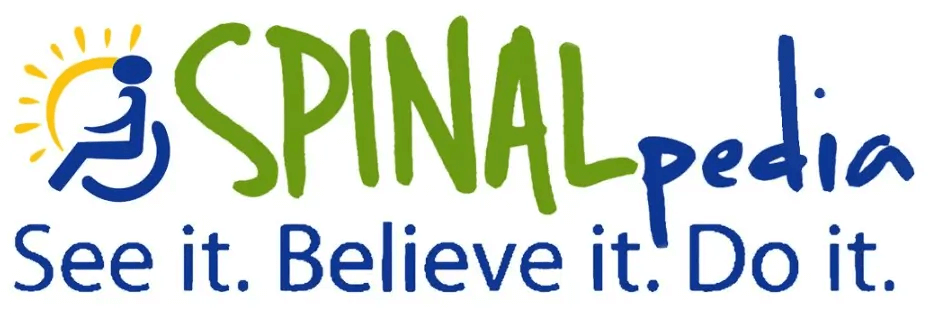What is Medicaid and Medicare?
We HIGHLY recommend checking out this list of SCI grants to help pay for expenses related to your injury, including health insurance. Many invaluable grant resources are available.
Both the federal US government and your individual state government provide healthcare and additional services for people with disabilities. The federal system, Medicare, and the state system, Medicaid, are two separate entities that are managed, funded, and applied for separately. This is important to understand, and making the two programs names so similar isn’t doing anyone a favor.
*Personal healthcare coverage is unavoidably specific. As an individual with a spinal cord injury, you will have a different set up and different needs than others. This learning portal will go over the general structure of Medicaid for a typical person with a disability. Please know you may require a different combination of programs. For example: you may have private health insurance already, which affects the state and federal programs for which you qualify.
*The qualifications and application for Medicaid varies from state to state. There are websites below that will help you find your states’ Medicaid headquarters. The configurations are similar state-to-state, but you will need to do some research to find exactly how your state’s program works and what it provides.
Half the battle of understanding these programs is knowing your vocabulary. There will be emboldened words with explanations throughout. We know nobody likes learning new terminology, but Medicare and Medicaid will help save you tens of thousands of dollars a year, so study up.
Medicare – Medicare is the federal health insurance program for people who are 65 or older, certain younger people with disabilities, and people with End-Stage Renal Disease.
Medicaid – Medicaid is a joint federal and state program that helps with medical costs for some people with limited income, limited resources, or certain disabilities. Medicaid programs vary from state to state, but most health care costs are covered if you qualify for both Medicare and Medicaid
We included the definitions of these programs because it is important to comprehend that they are different. In some situations, a person could have both Medicaid and Medicare simultaneously. The first part of this portal will focus on the state provided b>Disability and Income Based – Medicaid (MA).
What is Medicaid?
 In certain situations, it is possible that a person has both Medicaid and Medicare simultaneously. When there is more than one payor, then rules surrounding “coordination of benefits” determine which payor pays first. If services are covered by both Medicare and Medicaid—such as doctor appointments, hospital care, skilled nursing care and home care—then Medicare becomes the primary payer. Medicaid pays last and is considered the payer of last resort.
In certain situations, it is possible that a person has both Medicaid and Medicare simultaneously. When there is more than one payor, then rules surrounding “coordination of benefits” determine which payor pays first. If services are covered by both Medicare and Medicaid—such as doctor appointments, hospital care, skilled nursing care and home care—then Medicare becomes the primary payer. Medicaid pays last and is considered the payer of last resort.
Primary Payer – the insurance plan that processes the claim first when a member has more than one health insurance plan covering the services.
Secondary Payer – the plan, insurance policy, or program that pays second on a claim for medical care. A secondary payer may be either Medicare, Medicaid, or other insurance depending on the situation. Their payment is only to the extent that the rest of the payment has not been made.
What does Medicaid do?
Medicaid is a health insurance program provided by the state. If you work for Target Corporation, they provide a private health insurance program through a health insurance company, such as Medica, that will cover the majority of fees when you go to the emergency room, when you see your personal care physician for a stomach ache, when you have surgery on a broken finger, or any other non-elective interactions with medical providers. Even though Target provides this health program, you will pay a monthly fee—a premium—to maintain your coverage.
Because you are recognized as disabled by the state, Medicaid provides you a similar healthcare coverage program. Depending on your specific situation, you may pay premiums or a spend-down to the state to maintain coverage, but these are typically much lower than the premiums of private insurance plans found through the new www.healthcare.gov marketplace.
This is the major benefit. Because you’re disabled, you will potentially need more frequent and intensive health care, which would drive up your personal expenses if covered by standard healthcare programs. Through the government, these health care prices are controlled, all while still providing the more robust care you may need.
Within Disability-Based Medicaid, there are specific programs for individuals in different scenarios. Check out this portal to find what could work best for you.
If you have not yet applied for federal Medicare, you can do that here. You need both programs to get the best coverage: http://www.ssa.gov/planners/disability/dapply.html#&sb=1
Please watch the video below on the basics on Medicaid, and make sure to read our Takeaway Points below.
Video: What is Medicaid?
Takeaway Points
- Medicaid is funded by both the U.S. government and the individual state you live in
- You can be on both Medicaid and Medicare if you are eligible
- If your state has a Medicaid buy-in and you maintain eligibility based on program rules, you can both work and keep your Medicaid.
What is Medicare?

The official (US Government) definition of Medicare is as follows: the federal health insurance program for people who are 65 or older, certain younger people with disabilities, and people with End-Stage Renal Disease (permanent kidney failure requiring dialysis or a transplant, sometimes called ESRD).
Since you are now recognized as disabled by the government – because you signed up for Social Security disability – you qualify for the federal health insurance program called Medicare. Medicare works in tandem with state run Medicaid; Medicare is typically the first umbrella under which you will be covered.
So, Medicare will be the first organization to pay for a visit to your family doctor for a stomach ache, an x-ray of your ankle in the ER, or a prescription for muscle spasticity. Medicare covers a large chunk of your medical costs, but everything you do must be recognized by Medicare as a service that is covered – especially medications. Find out what is covered by Medicare here.
Medicare is separated into four components. Each component covers a separate area of the healthcare industry. It is possible to pick and choose components individually but it is common to have a preset combination. The Medicare website is actually pretty helpful in choosing what is best for you, it is the best tool to identify what you specifically need. Go here to find out.
Here is a breakdown of the four components of Medicare:

Part A (official info): helps pay for hospital and facility costs. This includes services like a shared hospital room, meals, and nurse care. Part A can also help cover the costs of hospice, home health care, and skilled nursing facilities.
Part B (official info): helps pay for medical costs. This is care that happens outside of a hospital. Part B includes services like doctor visits and outpatient procedures. It also covers some preventive care, such as flu shots.
Parts A and B together are called Original Medicare. These two parts are run by the federal government.
Part C (official info): these are Medicare plans. They are run by private companies and combine both Part A and Part B. There are multiple plans available, each with their own benefits. Part C is basically a private health plan that Medicare recognizes. These are called Medicare Advantage plans. They usually cover more of the costs you’d have to pay for out of pocket with Medicare Parts A and B. Part C plans put a limit on what you pay out of pocket in a given year, too. Some of these plans cover preventive dental, vision, and hearing costs. Original Medicare does not.
Part D (official info): helps pay for prescription drugs. They cover commonly used brand-name and generic drugs. Some plans cover more drugs than others.
The cost for each component varies dramatically. For a quick idea on what you could pay, click here.
Those are the four pieces of Medicare. As a person with a disability, you will use some combination of those four: most likely a Medicare advantage plan and Part D prescription drug coverage. This will be a main support for your future healthcare needs.
Next step: go to the Medicare website to decide what you need.
Video: The Story of Medicare – a Timeline
Takeaway Points:
- Medicare is reserved for those over 65 or those who are disabled
- Medicare typically covers primary costs before Medicaid
- Medicare Part A pays for hospital and rehab costs
- Medicare Part B pays for medical costs
Helpful Links:
- What’s Medicare? – Medicare.gov – https://www.medicare.gov/sign-up-change-plans/decide-how-to-get-medicare/whats-medicare/what-is-medicare.html
- Insurance and Medicare – Reeve Foundation –http://www.christopherreeve.org/site/c.mtKZKgMWKwG/b.4467345/k.46AF/Insurance_and_Medicare.htm
- Medicare Coverage – United Spinal Resource Center – http://www.spinalcord.org/resource-center/askus/index.php?pg=kb.page&id=1078









